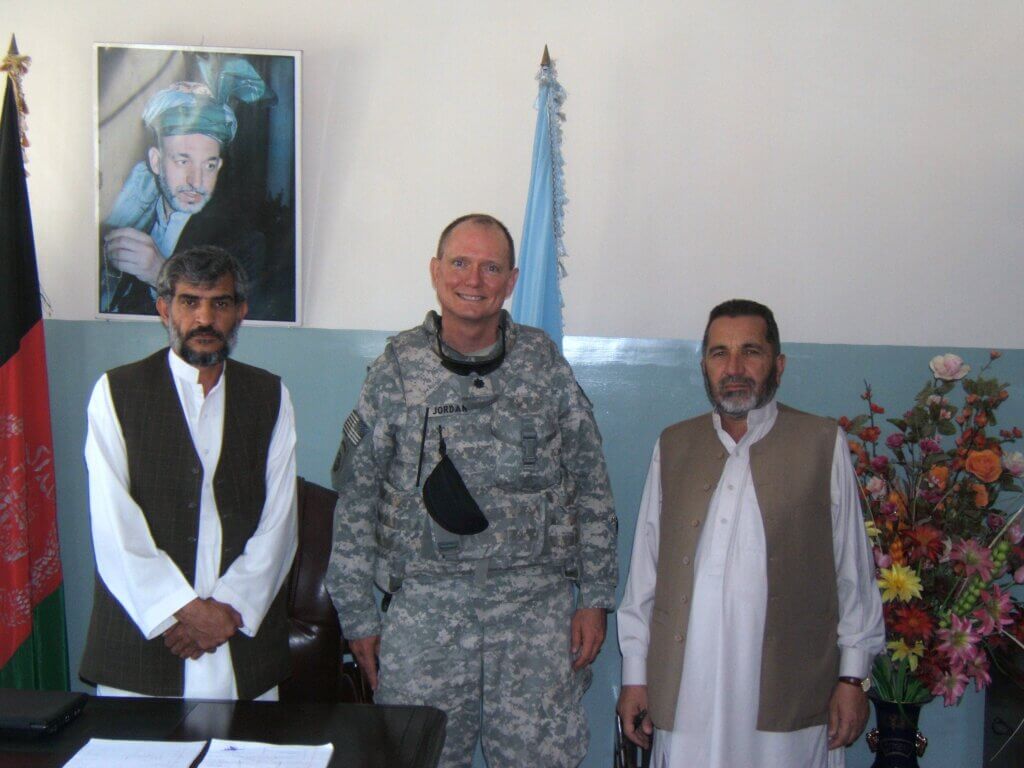
Richard Jordan
Transplant Services Center
UT Southwestern Medical Center
Army Engineer, Colonel
Richard Jordan grew up outside of Dallas, Texas, as the son of an Army Veteran; his father was in the Army Air Corps during WWII. While Richard admits that his father had some influence on his decision to enlist in the Army, part of his motivation was to find a way to help pay for college. He enlisted soon after high school – a friend who had already joined was in a tank company, so Richard joined as an armor crew member.
Starting his Army career in 1981, Richard began as a tank driver/loader. As part of a four-member crew, they operated the tanks for maneuvers and gunnery, did maintenance, and learned how to work as a crew and as a series of tank crews working together. After several years Richard had the opportunity to become a commissioned officer. Upon earning his commission he was assigned as an engineer officer in 1984.
Throughout his career, Richard was stationed at several bases throughout the United States – including Fort Knox, KY, Fort Hood, TX, Fort Belvoir, VA, Fort Leavenworth, and Fort Bragg, NC. His first international deployment didn’t come until 20 years into his career, when he was sent to Bosnia. There, he worked as an engineer, charged with coordinating infrastructure projects with local nationals as a peace-keeping mission, repairing damages from war.
Returning from Bosnia, Richard considered military retirement, but the attacks of September 11th strengthened his resolve to continue service to the country. After 9/11, things in Iraq began to “heat up” and Richard expected to be sent there. However, he was deployed to Kosovo on another engineering mission. He was there for a year, helping to build bridges, fix roads, and other similar projects. He came back to the States, and was deployed again, this time to Afghanistan.
Richard says he had “mixed feelings” about going to Afghanistan. “I wanted to go help the Afghan people gain freedom and democracy, and protect women’s rights… At the same time, I was apprehensive. The United States had been there 10 years already, and it was certainly unclear whether we were making meaningful progress.” Describing his experience in Afghanistan, Richard says, “It was a lot of hard work. Even as a Staff Officer, it was a lot of long and exhausting days trying to bring about cultural change in a challenging environment.”
After 14 months in Afghanistan, Richard remained in the military for four more years working with the Texas National Guard as Director of Construction and Facilities Management. During his military career, Richard found the time to attend college at the University of Texas in Arlington, earning his business degree.
Explaining his transition into eye banking, Richard explains that he actually started eye banking when he joined the military –as another a way of earning money for college! He didn’t expect it to become a career. He already had a bit of training as an Emergency Care Attendant, and always had an aptitude for the life sciences, so one thing led to another and eye banking also became a career. It was a great way to help people in need.
Today, as the Associate Director at Transplant Services Center, UT Southwestern, his military training informs his career as an eye banker. “The military teaches leadership and that everything is a process – great for project management at the eye bank.” Richard notes that while his military background helps him at the eye bank, his eye banking background also helped him in the military, saying, “It gave me a softer, more humanitarian perspective.” Both careers provided excellent opportunities to continuously hone leadership skills.
Richard says joining the military was one of the “best decisions” he ever made in his life. “It was a good way to serve my community on a larger scale as a nation. It gave back to the community at large. I recommend military service to anyone.”


